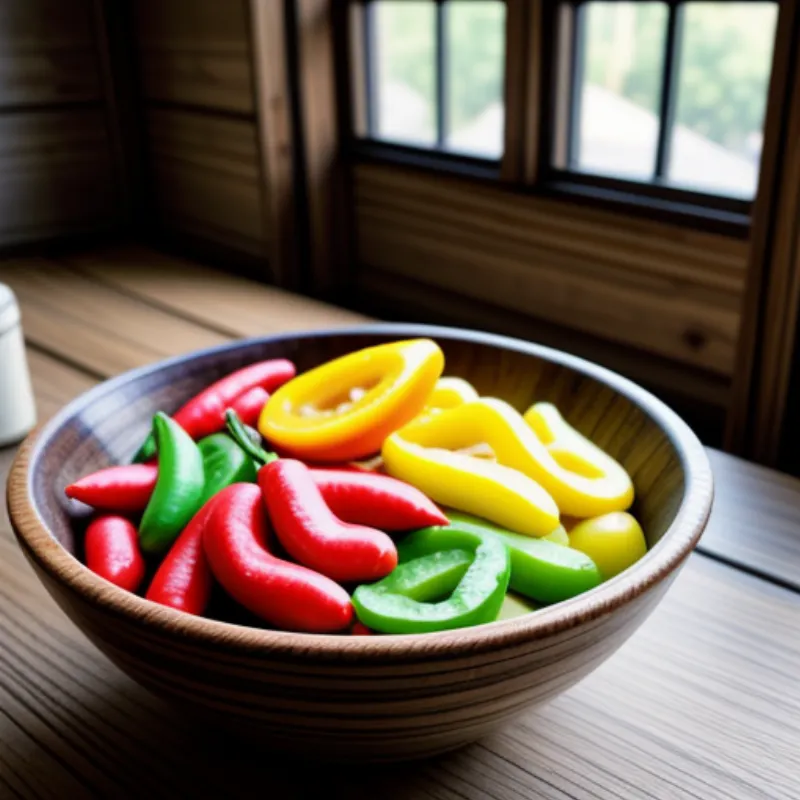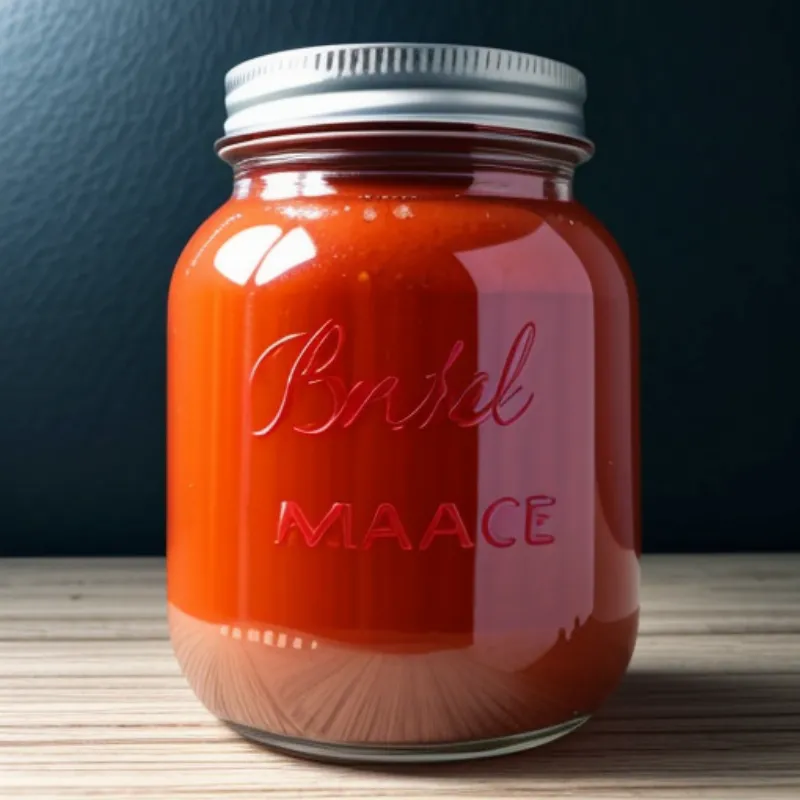Fermented hot sauce. Just the name itself conjures up images of vibrant colors, tantalizing aromas, and a burst of flavor that dances on your tongue. But unlike its vinegar-based cousins, fermented hot sauce boasts a depth and complexity that only comes from the magic of fermentation. Imagine a symphony of flavors, with tangy notes playing harmoniously with fiery heat and a satisfying umami undertone.
This is the allure of fermented hot sauce. It’s not just a condiment; it’s an experience, a journey for your taste buds. And the best part? You can easily recreate this magic in your own kitchen!
Gather Your Ingredients: The Building Blocks of Flavor
Making fermented hot sauce is surprisingly simple. You don’t need fancy equipment or years of culinary experience. All you need are a few basic ingredients, a dash of patience, and a thirst for adventure.
Here’s what you’ll need:
- Hot Peppers: 1 pound (about 500g) – Feel free to mix and match your favorites! Jalapeños offer a familiar heat, while habaneros bring the fire. For a milder sauce, try Anaheim or poblano peppers.
- Garlic: 4-6 cloves, peeled and crushed – Garlic adds a pungent depth and contributes to the fermentation process.
- Salt: 3 tablespoons (about 45g) of non-iodized sea salt – Salt is crucial for controlling the fermentation process and developing flavor.
- Water: Enough to create a brine (we’ll get to that later)
- Optional Flavor Enhancers: This is your chance to get creative! Consider adding ginger, onion, cilantro stems, or even fruits like pineapple or mango for a unique twist.
 A colorful array of hot peppers, garlic, and spices
A colorful array of hot peppers, garlic, and spices
Tools of the Trade:
- Jar: You’ll need a clean glass jar to house your fermenting masterpiece. A 32-ounce (1-quart) jar works well for this recipe.
- Weight: This is key to keeping your peppers submerged in the brine, preventing mold growth. You can use a fermentation weight, a small plate, or even a zip-top bag filled with brine.
- Airlock Lid or Cloth Cover: This allows gases to escape during fermentation while preventing unwanted bacteria from entering your jar. You can find airlock lids online or at homebrew supply stores. In a pinch, a clean kitchen towel secured with a rubber band will do the trick.
The Art of Fermentation: A Step-by-Step Guide
- Prep Your Peppers: Wash your peppers thoroughly and remove the stems. You can leave the seeds for extra heat or remove some for a milder sauce.
- Blend It Up: In a food processor or blender, combine your peppers, garlic, and any optional flavor enhancers. Pulse until you reach your desired consistency. Some people prefer a chunky sauce, while others like it smooth.
- The Brine: In a separate bowl, dissolve the salt in the water. The amount of water you need will depend on the size of your jar and how much pepper mixture you have. As a general rule, you want enough brine to completely submerge the peppers once they’re in the jar.
- Combine and Pack: Add your pepper mixture to the jar, pressing down firmly to remove any air pockets. Pour in the brine, ensuring the peppers are completely covered.
- Weight It Down: Place your weight on top of the peppers, making sure they stay submerged beneath the brine.
- Seal and Ferment: Seal the jar with your airlock lid or cloth cover. Find a cool, dark place for your hot sauce to ferment. The ideal temperature is between 68-77°F (20-25°C).
 Glass jar with fermenting hot sauce, airlock lid, and a handwritten label
Glass jar with fermenting hot sauce, airlock lid, and a handwritten label
Patience is a Virtue: The Waiting Game
Now comes the hardest part: waiting! Your hot sauce will need to ferment for at least 1-2 weeks, but for optimal flavor development, 3-4 weeks is recommended. During this time, you’ll notice bubbles forming in the jar – a sign that fermentation is alive and well!
Taste and Adjust: The Final Touches
After the desired fermentation time, it’s time for the taste test! Your hot sauce should have a tangy, complex flavor with a noticeable acidity.
- Not Tangy Enough?: Let it ferment for a few more days, checking the taste daily.
- Too Spicy?: Remove some of the seeds before blending or add more sweet ingredients like carrots or bell peppers.
- Want a Smoother Sauce?: Blend the fermented mixture again until it reaches your desired consistency.
Bottling Your Brew:
Once you’re happy with the flavor, strain the hot sauce through a fine-mesh sieve or cheesecloth to remove any solids. Bottle your liquid gold in sterilized bottles and store them in the refrigerator.
Enjoy the Fruits of Your Labor: Serving Suggestions
Congratulations, you’ve just made your own fermented hot sauce! Now it’s time to enjoy the fruits of your labor. Drizzle it over tacos, eggs, pizza, or anything that needs a flavorful kick.
Pro Tip: Did you know fermented hot sauce makes a fantastic homemade gift? Bottle it up in small jars and share the fermented love with friends and family. They’ll be blown away by your culinary skills!
FAQs About Fermented Hot Sauce:
Q: Can I use any type of salt for fermentation?
A: While you can technically use any type of salt, non-iodized sea salt is highly recommended for fermentation. Iodized salt can sometimes inhibit the fermentation process and may impart a metallic taste.
Q: My fermented hot sauce has a white film on top. Is it still safe to eat?
A: A thin white film on the surface of your hot sauce is usually Kahm yeast, a harmless byproduct of fermentation. It might look a little strange, but it’s completely safe to skim off and discard.
Expert Insight:
“Fermentation is like a dance between microorganisms,” says renowned fermenter and author, Emily Foster. “Each ingredient, each step, plays a crucial role in shaping the final flavor profile. Don’t be afraid to experiment and make it your own!”
This journey into the world of fermented hot sauce is just the beginning. Once you’ve mastered this recipe, explore new flavor combinations, experiment with different peppers, and unlock a world of culinary possibilities. And if you’re looking to expand your fermentation repertoire, check out our guide on making your own kombucha barbecue sauce for a tangy, probiotic-rich twist on a classic condiment. Happy fermenting!
